Reports
Neutron Source: Iran’s Uranium Deuteride Neutron Initiator [1]
May 13, 2019
The Iranian Nuclear Archive shows that Iran planned on using a relatively sophisticated neutron source, or initiator, to trigger a chain reaction in the weapon-grade uranium core of its nuclear weapons. This source was made by combining natural uranium and deuterium into uranium deuteride (UD3). In essence, the natural uranium serves as the carrying material for the deuterium. UD3 sources have a long life, meaning they do not need to be replenished due to radioactive decay, like other common types of neutron initiators used in nuclear weapons. Figure 1 shows the placement of a neutron source in a schematic of a nuclear weapon design from Iran’s Nuclear Archive, a significant portion of which was seized by Israel in January 2018. According to documents in the Nuclear Archive, the neutron source design, development, testing, and production was under the Operating System Project of Project 110 of the Amad Plan. A Gantt diagram from the archive, detailing the major tasks of the Operating System Project, states that Iran’s neutron source project started in the spring of 2000 and was expected to finish by early November 2003. Overall, Project 110 expected to have built five nuclear weapons by March 2004.
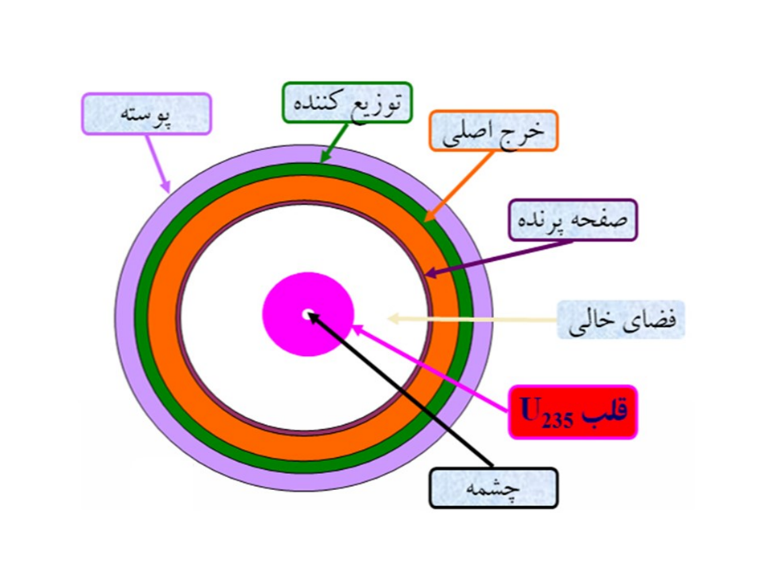
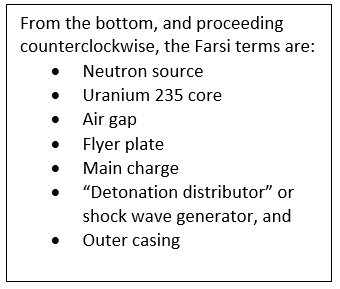
Figure 1. A nuclear weapon schematic from the archive that shows a neutron source at its center. It represents a levitated nuclear weapon design, i.e. one with an air gap and flyer plate to increase compression of the core, based on the use of weapon-grade uranium. Source: Nuclear Archive, presented by Prime Minister Benjamin Netanyahu on April 30, 2018.
Under international pressure, starting in the fall of 2003, Iran downsized the entire Amad program and reoriented it into better camouflaged, overt and covert parts. 2 The work on the neutron initiator does not appear to have been completed on schedule, but continued in the reoriented nuclear weapons program that may continue into the present.
The Nuclear Archive documents Iran’s development, testing, and production of a neutron initiator that is intrinsic to an effort to produce nuclear weapons. This project was inconsistent with, if not a violation of, Article II of the Nuclear Non-Proliferation Treaty (NPT).
Background
With this type of neutron source, the neutrons needed to start a chain reaction are produced through the fusion of two deuterium (D) nuclei, where the energy needed to achieve D-D fusion comes from compression caused by high explosives. In essence, high explosives compress the nuclear core and the initiator at its center, producing a spurt of neutrons as a result of fusion in D-D reactions. The neutrons flood the core of nuclear explosive material, e.g. weapon-grade uranium, and initiate the chain reaction. This does not boost yield. Figure 2 shows the placement of such an initiator in a Pakistani nuclear weapon schematic advertised by A.Q. Khan on the cover of one of his books. A.Q. Khan and/or his associates are known to have provided at least one nuclear weapons design to Iran, but the assistance reached the Iranian nuclear weapon program relatively late, according to Israeli government briefers. 3 The extent of Pakistani assistance on a UD3 initiator is currently unknown, but it cannot be excluded. Moreover, it should be noted that the Iranian nuclear weapon design is by no means a copy of Pakistani nuclear weapons designs. Iran received assistance from at least one ex-Soviet nuclear weapons expert, who helped Iran develop an indigenous nuclear weapon design. 4
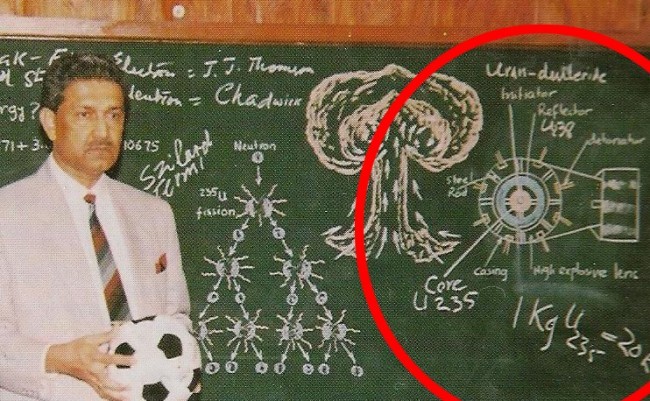
Figure 2. An image from the cover of the book Dr. A.Q. Khan on Science and Education, by A.Q. Khan. Inside the red circle can be seen an illustration of a uranium deuteride neutron initiator, which is at the center of what appears to be a schematic of a levitated fission nuclear weapon.
Neutron Source Project
According to a Gantt diagram from the archive for the Operating System Project, under Project 110, Iran’s Neutron Source Project involved several tasks, expected to stretch for almost 1,150 days from early 2000 to late fall of 2003. The major tasks under the subtitle “source design and production” included:
- Research and design of source
- Safety and health
- Technology and production of source
- Test of source
- Re-design of source
- Final compilation of technical knowledge of the source
Subproject 3.21: Neutron Initiator Tests
There have been allegations for several years, confirmed by information in the archive, that Iran conducted high explosive compression tests of a UD3 neutron initiator in the high explosive chamber in Taleghan 1 at the Parchin military site (see Figures 3 and 4). Despite Iranian denials, the new information from the Nuclear Archive adds concretely to the case that the explosive chamber in Taleghan 1 conducted these types of tests.
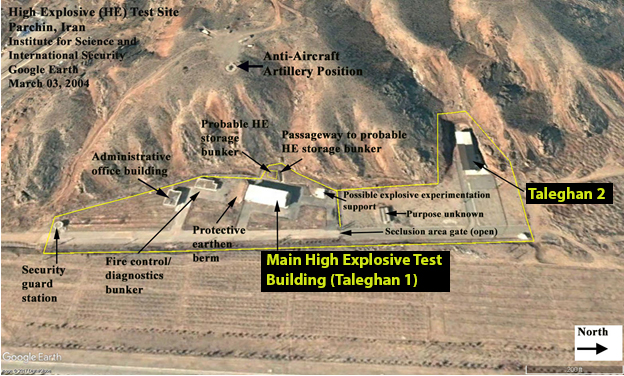
Figure 3. A 2004 Google Earth satellite image shows the Parchin complex that was involved in nuclear weapons high explosive testing under the “Amad Plan.” This site has been extensively sanitized by Iran. The Nuclear Archive contains extensive information on this site, in particular the two main facilities, which Iran calls in the documents Taleghan 1 and 2. Taleghan 1 contained the high explosive test chamber that is often discussed publicly, and Taleghan 2 contained a smaller high explosive test chamber and a flash x-ray system that was not visited by the International Atomic Energy Agency (IAEA).
Figure 4. Image from the archive that shows the main high explosive test chamber in Taleghan 1 at the Parchin site. Annotations by the Institute.
The measurement of the neutrons emitted by this UD3 source would be one of the most difficult measurements Iran would need to make in developing a nuclear weapon. The Iranians would also need to perform accurate calculations about the number of neutrons that would be produced, and the time at which they would be produced. The timing of the explosion and resulting shock waves would need to be near perfect in order to create enough fusion to result in a spurt of neutrons, both in a reliable manner and at exactly the right instant. The experiment itself is very difficult to do. There are relatively few neutrons emitted in a brief period of time, and there is a great deal of noise from the electronics in the detectors that interferes with neutron measurements.
The archive contains an Iranian slide presentation relevant to these tests, under what is called “subproject 3/21,” alternatively 3.21, 5 which was focused on neutron measurements. Interestingly, a slide from an Iranian presentation in the archive lists subproject 3/20 (alternatively 3.20) as in charge of manufacturing UD3, where, according to the design, this type of source is to be used in the “main system,” likely code for nuclear weapon. The slide summarizes in a credible manner how to make UD3, starting with uranium metal chips and deuterium gas. The location of the manufacturing site of UD3 is not currently known.
With regard to the document on subproject 3/21, Israel made public only five slides out of a total of ten or more in the presentation from the archive. The slides are dated May 22, 2003. The second slide lists the main activities of this project:
- Measurement of discrete and continuous neutron flux of continuous and pulsed sources, explosive and non-explosive;
- Use of a nuclear spectrometer to identify radio-isotopes and materials’ analysis.
The next several slides are all titled “Results of Taleghan Test.” The first Iranian slide shows an experimental arrangement, with English annotations identifying a large Boron trifluoride (BF3) neutron detector (Figure 5) against the high explosive chamber. It is labelled “Big BF3-1,” where the number one at the end may refer to detector number. Figure 6 shows a picture from the presentation with annotations pointing to more neutron detectors at an unknown location, although they look to have been carried out against the side of the large explosive chamber. Annotated is a commercially available NE-213 liquid-scintillator detector, two activation counters, and a CR-39 track detector. The last available slide shows a control point inside a tent outside the main chamber building (see Figures 7 and 8).
These neutron detectors are well known. In their organization, as given in the two figures, they appear to have been part of a neutron measuring system used in nuclear weapon states in the development of nuclear weapons. These detectors can reveal the total number of neutrons emitted and their energy spectrum. Moreover, the choice of the detectors provided a backup capability, increasing the chances that the experiment would accurately record the neutron emissions and produce a permanent record of the total number produced. One expert we consulted judged the approach as “clever.” Overall, subproject 3/21 appears to have sought the best detector systems for detecting a short pulse of neutrons produced during the compression by high explosives of a uranium deuteride neutron source. 6
Starting Up the Chamber. The Parchin facility was operational and ready to conduct neutron source experiments by early 2003, based on another document in the archive. This document describes the contamination level caused by a “raw material,” identified as uranium in a neutron source in the same document, used in a chamber experiment conducted on February 15, 2003. 7 The intent appears to have been to test the chamber prior to routine operation to ensure the chamber worked as designed and radioactive material was not released into the hanger holding the chamber. Overall, the test was judged a success from the point of view of health and safety, with some recommended future actions that are discussed below. The health and safety manager reported to the head of Project 3030 (likely Project 3.30, which was diagnostics), with a copy to the head of Project 110, his principal finding that “regular tests in the chamber are authorized.” Thus, the date of the document of February 2003 can be viewed as the start of routine operation of the Taleghan chamber.
In the document, this raw material is referred to as “U,” strongly suggesting that it was uranium. The use of the term “neutron source” would also imply that the object tested was explosively driven, and upon compression, produced a spurt of neutrons. The most likely candidate for this object is a uranium-deuteride neutron source.
According to the document, the raw material arrived at the Parchin site with a “cover,” e.g. encased, and no contamination was observed. As a result, no special precautions were taken during the assembly of the “part,” which again is undefined, likely for information security reasons. Likewise, the assembly location is not identified in this document. But the document makes clear that this part was tested in the experiment. Following the test, “no radiation was measured outside the chamber,” states the author, implying that the chamber worked as designed and the initial negative pressure inside the chamber (under vacuum) apparently led to the venting of material into the atmosphere. Afterward, the chamber’s shower system was used once to wash the chamber. After waiting 24 hours to let the residue settle, ventilation began, and the chamber door was opened (see Figure 4). One problem was that the chamber’s ventilation system did not create a sufficient air-flow to the external venting pipes, causing some of the toxic gases to escape the chamber through the opened door into the room, and leading personnel to inhale it. Certain high explosive products, such as oxides of nitrogen and carbon monoxide, are toxic.
At an unidentified time after the opening of the door and the beginning of the venting of the chamber, a person with appropriate safety gear entered it and collected the “crude waste” inside the chamber and then manually cleaned it. Before this person washed the chamber, he or she took some samples near the location of the explosion and from the floor near the door. These samples showed an average of 10 CPS, which may mean counts per seconds registered by the detector, which is undefined. The manager wrote that the values were higher than the “baseline” but well below radiation health and safety guidelines. In this report, the health and safety manager referred explicitly to the guidelines of the U.S. Environmental Protection Agency (EPA) for safe limits of uranium in water and solid wastes. 8 Additional samples were taken of chamber waste from the waste tank and from “regular water.” The uranium concentration in the liquid samples was higher than the “baseline” for the chamber but well below the allowed level of uranium concentration in liquids set by the EPA. The uranium concentration in the samples of solid waste from the chamber was significantly higher than that in the liquids, but still well below the regulatory limit.
The manager’s overall conclusion was that the chamber was “ready for regular tests, as long as the shower is not used.” He did not explain the exact reason why he was concerned about the use of the chamber’s shower. Although the measured radiation levels were within the standards, perhaps there was concern about the chamber’s shower needlessly spreading radioactive contamination. He added that in the case of the “need to repeat neutron source tests,” several additional instructions should be followed, apparently aimed at reducing potential contamination levels to personnel, such as having a “shower/bath” and apparently a changing closet, and better containing the wastes.
The number of neutron source tests subsequently conducted is currently unavailable. However, it does appear that the work to develop and produce UD3 sources was not finished by the fall of 2003, when the nuclear weapons program was downsized and reoriented into new overt and covert parts. 9 The senior members of the Amad Plan recognized the sensitivity of on-going neutron source work, as exemplified in minutes of secret Iranian meetings held in August and September of 2003 to discuss the reorientation of the nuclear weapons program. In one meeting in early September, a senior official stated: “Neutrons [sic] research could not be considered ‘overt’ and needs to be concealed. We cannot excuse such activities as defensive. Neutron activities are sensitive and we have no explanation for them.” 10 That this work continued covertly is supported and confirmed by information obtained by the media several years later, described below.
Post-2004 Work. An Iranian document, which is an introduction to a larger report, was released by The Times of London in December 2009, titled “Outlook for special neutron-related activities over the next 4 years.” The document appears increasingly legitimate and describes an Iranian plan by the “neutron group” in a “Centre,” apparently the Institute for Physics, to further develop, produce, measure, and test pulsed neutron sources, as well as conduct calculations and simulations. 11 Like other Iranian nuclear weapons-related documents, this document appears deliberately opaque in its descriptions of key activities. Nonetheless, the document, which is dated 2007, suggests that although work on neutron sources made progress in the past, it was reduced in scale at some point. The plan was to increase that work over four years.
The document implies ongoing work on the production and testing of a UD3 initiator. The plan includes a prioritization of subjects “in the light of the current political climate and our existing capabilities.” It also discusses continuing the work on replacement materials, such as another initiator made from titanium deuteride (TiD2) in order to “avoid U pollution from the production of UD3.” One aspect discussed is the project’s need for better neutron detectors and associated electronics, although it acknowledges that the group has already made important accomplishments in this area. It states, “For those areas that fall short of requirements, we must attempt to resolve the situation by creating, designing, and purchasing solutions under the ordinary project arrangements,” in consultation with the project’s scientific consultants.
The document also states a requirement for increased staffing to perform neutron calculations, including two persons with PhDs and four with Masters degrees. In selecting personnel to carry out the calculations, the document notes that there are “insufficient numbers of personnel to cover the field of neutron calculation.” It adds that “if they are to be employed, specific safeguards must first be put in place. The most appropriate way of obtaining the required personnel is to employ individuals who were involved in the relevant calculation projects in the past.”
Conclusion
Iran’s neutron source efforts were a key part of its nuclear weapons program, which aimed to build five nuclear weapons by early 2004. The evidence about Iran’s neutron source project includes documentation of tests involving undeclared uranium and the construction of neutron sources intrinsic to an effort to produce nuclear weapons. This project was inconsistent with, if not a violation of, Article II of the NPT. The IAEA has been unable to determine whether this project, as well as a broader nuclear weapons effort, continues today, in whole or in part.
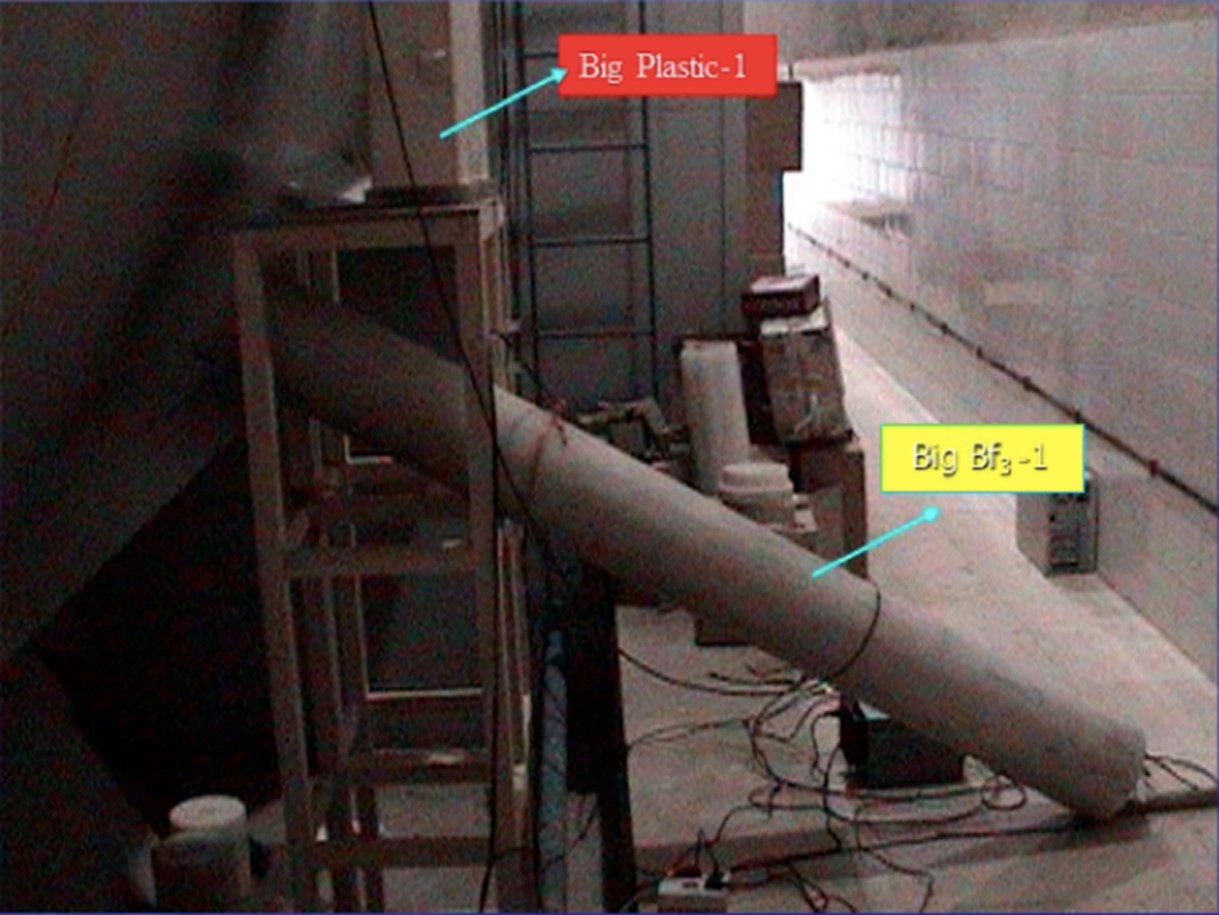
Figure 5. A large boron trifluoride (Bf3) neutron detector outside the main explosive chamber, with a view looking to the north. Annotations in English are on the original Iranian photo from the Nuclear Archive. The term “Big Plastic” appears to be neutron scientists’ jargon for the plastic being thick enough to absorb all the incident neutrons, e.g. it is 100 percent efficient, according to Dr. Konovalov (see footnote 3).

Figure 6. A NE-213 liquid-scintillator detector, two activation counters, and a CR-39 Polyethylene track detector, apparently set up next to the high explosive chamber. English annotations are on original Iranian photo in the archive.
Figure 7. Image from the archive seized by Israel and made available to the public. As discussed in the text, it shows the west wall of the main building at the Parchin site and an associated tent. Annotations by the Institute.
Figure 8. Google Earth satellite image of Taleghan 1, showing the former location of the neutron counter recording tent. Annotations by the Institute.
[1] This report is an updated, modified extract from: David Albright, Sarah Burkhard, Olli Heinonen, and Frank Pabian, “New Information about the Parchin Site: What the Atomic Archive Reveals About Iran’s Past Nuclear Weapons Related High Explosive Work at the Parchin High Explosive Test Site,” Institute for Science and International Security, October 23, 2018, http://isis-online.org/isis-reports/detail/new-information-about-the-parchin-site/8
2. David Albright, Olli Heinonen, and Andrea Stricker, “Breaking Up and Reorienting Iran’s Nuclear Weapons Program: Iran’s Nuclear Archive Shows the 2003 Restructuring of its Nuclear Weapons Program, then called the AMAD Program, into Covert and Overt Parts,” Institute for Science and International Security, October 29, 2018. http://isis-online.org/isis-reports/detail/breaking-up-and-reorienting-irans-nuclear-weapons-program ↩
3. Briefing by Israeli government officials in Tel Aviv for Albright, January 27, 2019. ↩
4. David Albright and Olli Heinonen, “Shock Wave Generator for Iran’s Nuclear Weapons Program: More than a Feasibility Study,” Institute for Science and International Security, May 7, 2019, http://isis-online.org/isis-reports/detail/shock-wave-generator-for-irans-nuclear-weapons-program-more-than-a-feasibil ↩
5. This can also be translated as 3.21, as a “/” in American English is a decimal point. ↩
6. The Institute wishes to acknowledge the contribution to this analysis of Dr. Vitaly Konovalov, a former neutron physicist who worked in Russia and CERN. ↩
7. From Manager of Safety and Hygiene, to the Honorable Executor of Project 3030, with a copy to executor of Project 110, February 24, 2003, No. 1434, Top Secret. ↩
8. For example, the manager who wrote the document used EPA community water radiation standards of a maximum contaminant level (MCL) of uranium of 30 micrograms per liter, which is about 300 parts per billion (ppb), the unit in the document. ↩
9. “Breaking Up and Reorienting.” ↩
10. Quote from a June 2018 Israeli PowerPoint presentation. See also “Breaking up and Reorienting.” ↩
11. “New Document Reopens Question on Whether Iran’s Nuclear Weaponization Work Continued Past 2003, Institute for Science and International Security, December 14, 2009, http://isis-online.org/isis-reports/detail/new-document-reopens-question-on-whether-irans-nuclear-weaponization-work-c/8. . Farsi and English versions of the document are at: ↩

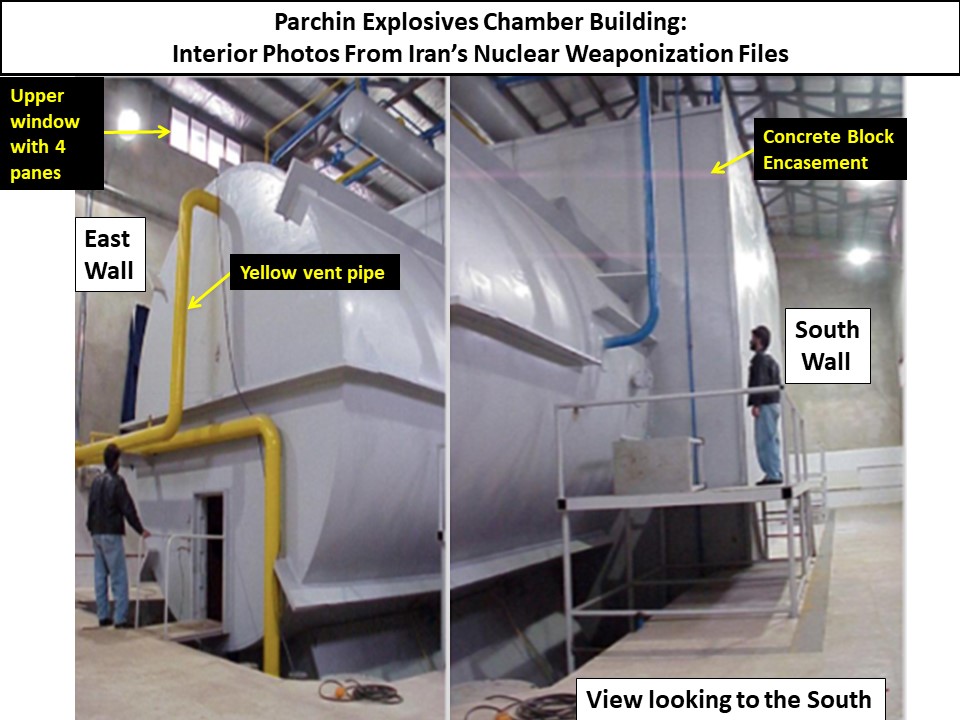
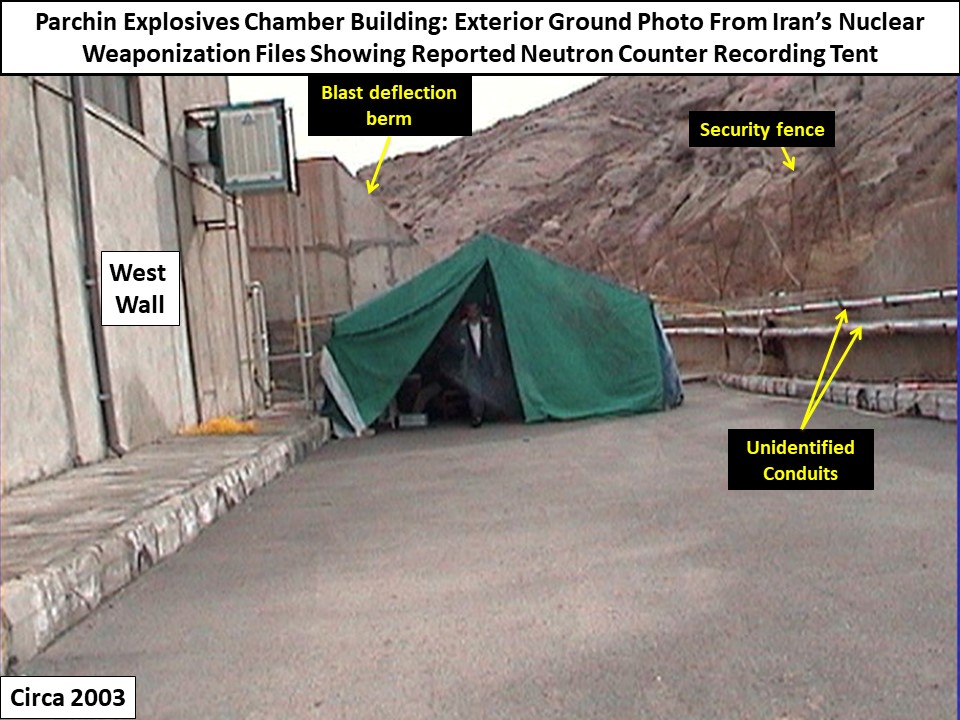
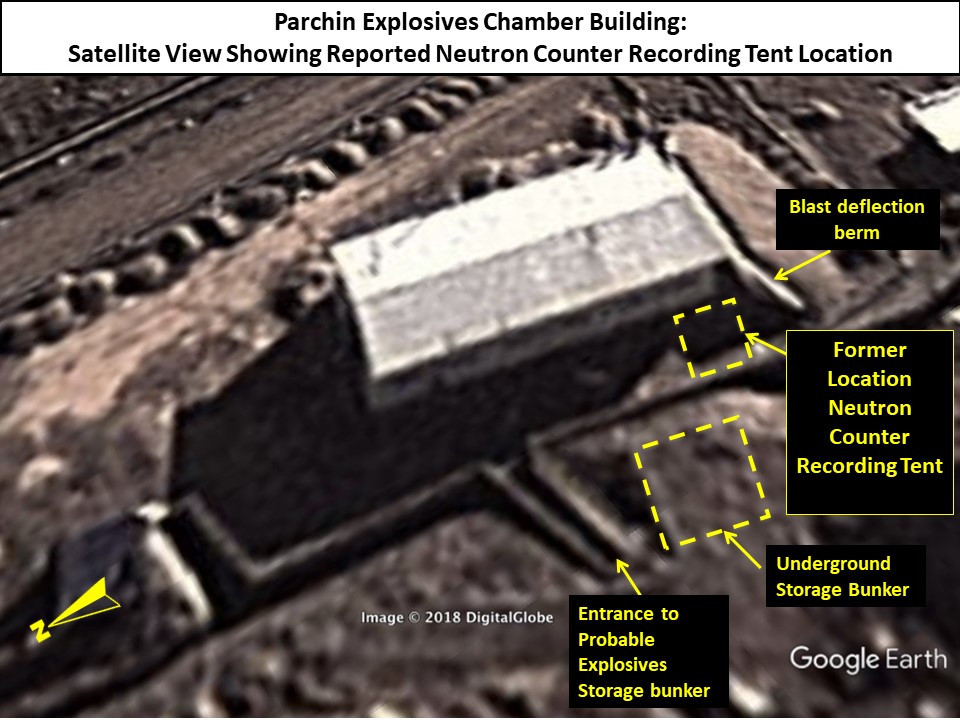
 twitter
twitter